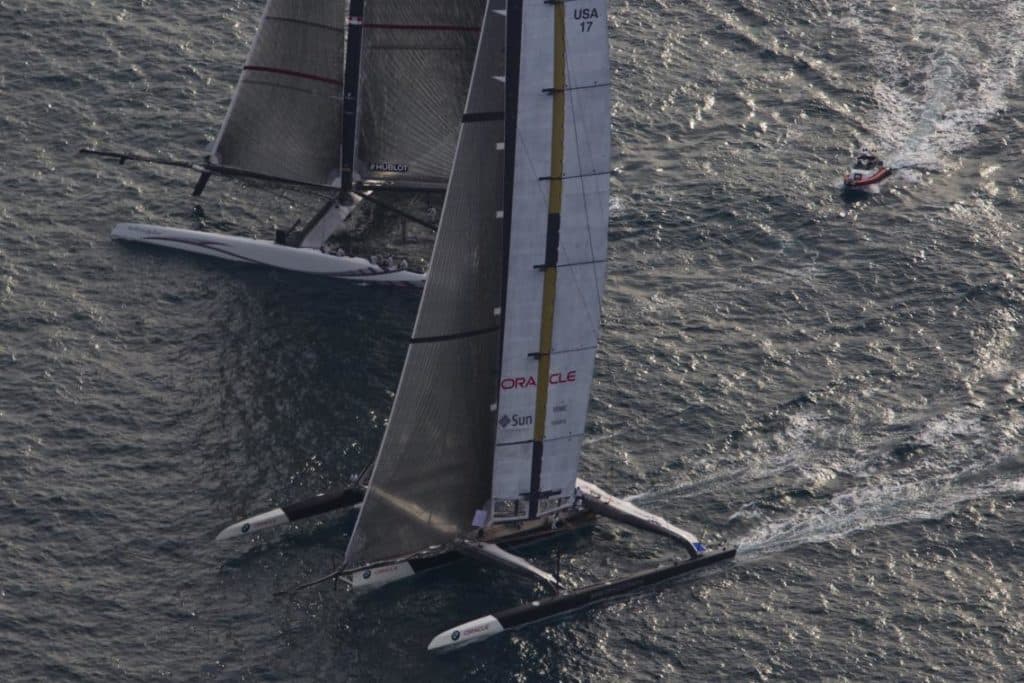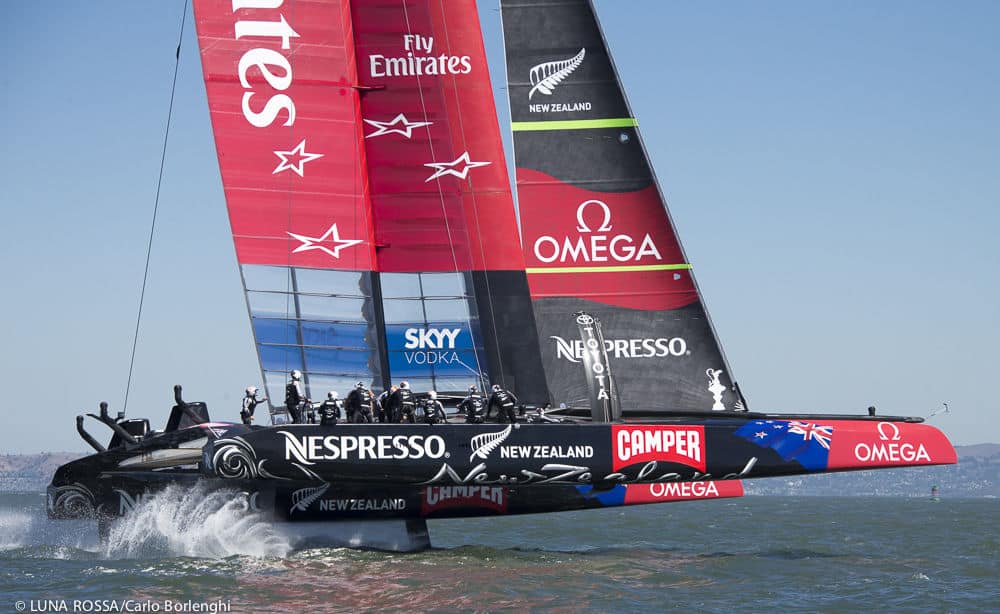In a special head to head showdown: the biggest multihulls to ever sail the Cup.
The Golden Gate Challenge: 2010

In yet another unusual Deed of Gift match, Club Náutico Español de Vela (CNEV) challenged the winners of the 2007 America’s Cup, Alinghi, sailing for Société Nautique de Genève for the Cup and the right to keep the event in Valencia, Spain. Controversial terms led to a legal battle over the rightful challenger to the Cup during which a second challenger, Golden Gate Yachts Club, asserted their right to seek the trophy. After CNEV lost the suit on the grounds of being unqualified as per the Deed of Gift, Golden Gate Yacht Club was chosen as the rightful challenger.
As a Deed of Gift match, it was sailed one-on-one between Alinghi and the Golden Gate Yacht Club. The match proved to be a spectacle, with 90 foot multihulls selected as the platform for racing in the best of three series. Alinghi opted for a catamaran, making full use of the 90-foot waterline limit, but measuring in at 120 feet overall. Alinghi, controversially installed engine powered hydraulics to manage the massive catamaran’s controls. The Swiss catamaran faced off against BMW Oracle Racing’s equally impressive 90-foot trimaran. The boat underwent extensive refits and upgrades during preparation for the event, including matching Alinghi’s decision to add powered hydraulics and a rigid wing sail.
The wing sail proved to give BMW Oracle Racing the advantage, and the trimaran sailed to victory over Alinghi in just the the first two races.
vs.
The AC 72: 2013

For the 34th America’s Cup, yet another new class of boat was introduced that would help shape the event into what we are watching in Bermuda today. The AC72 was to be a wing-sailed catamaran, drawing inspiration from the 32nd Cup, a series of preliminary events around the world venues leadup to the actual event, sailed in AC45s, smaller one-design versions of the AC72s.
The AC72 drew controversy as the official challenger, Club Nautico di Roma withdrew from the competition, citing challenges in raising sufficient funds to field a competitive team. A second yacht club filed a challenge, the Royal Swedish Yacht Club assumed the duties of the challenger.
Rumors of hydrofoiling an AC72 floated about the cup as teams began test sailing their racing platforms. Foiling was confirmed when Emirates Team New Zealand’s AC72 yacht Aotearoa was seen sailing on hydrofoils in August, 2012. This sparked a technology race in foil development and control as the 34th Cup would be won by the team who foiled fastest and longest. The Royal New Zealand Yacht Club won the right to sail in the America’s Cup match easily beating the Italian and Swedish challengers in the Louis Vuitton Cup. The resulting match between the USA and NZ was the longest on record, with Oracle Team USA staging an epic come-from-behind victory, winning eight straight races to defend the cup and beat New Zealand 9–8.









